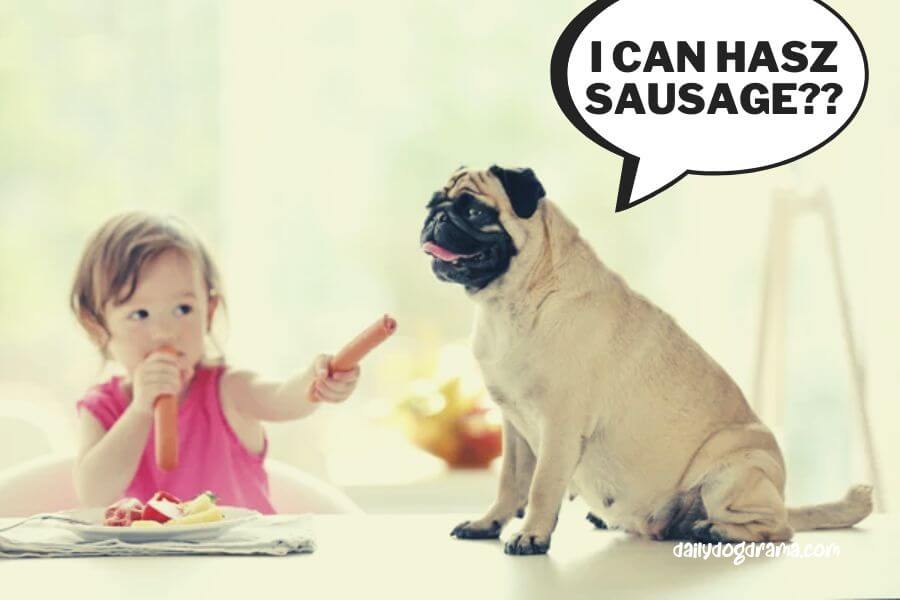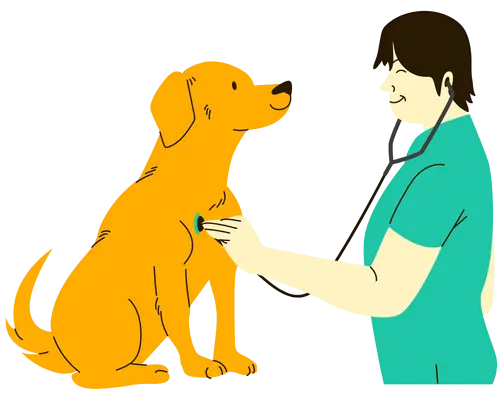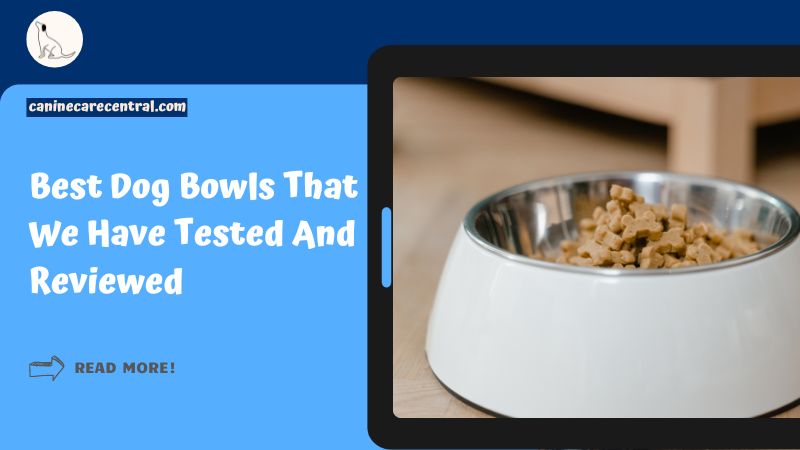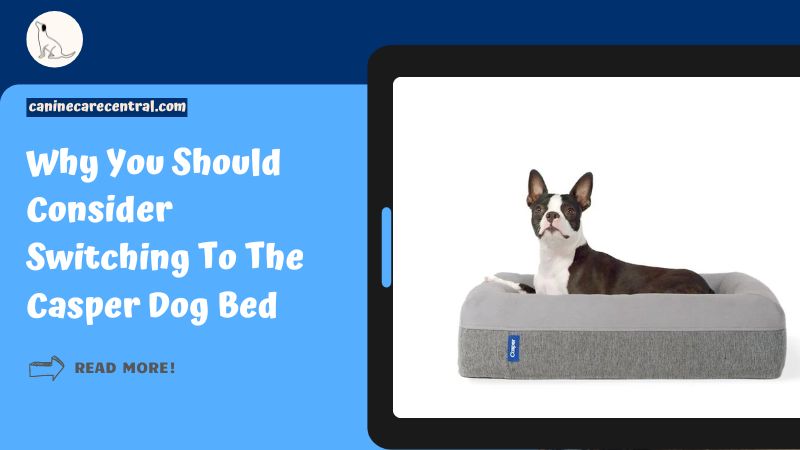Do you know what DOG ESSENTIALS you are missing out? Find out now!
Zack Keithy, our author, is a certified veterinarian technician (UC Blue Ash) for over 6 years (contact him here). The articles written here are based on his expertise and experience, combined with a review by our expert vet reviewers including Dr M. Tarantino. Learn more about us here.
Are you wondering what to do seeing that your dog ate a bologna casing (the red ring around the bologna slices)? Or perhaps just the bologna string?
Can these pose a health problem to them and if so, how should you handle it?
Do not worry too much as your dog will in most cases pass it out within 30 to 36 hours of ingesting a bologna casing or string, and should not pose any danger to them.
Read on as we discuss some of the finer points and when you need to take immediate action.
Medical Questions? Talk to a Veterinarian 24/7.
Connect one-on-one with a licensed vet who will answer your questions in minutes.
*Article may contain affiliate links to retailers like Amazon and Chewy. Learn more on our disclosure page.

- Dogs Ingesting Bologna Casings And Strings
- What Are Bologna Casings Made Of?
- Dangers of Your Dog Swallowing Bologna Casing
- Watch for Signs of an Obstruction in the Gastrointestinal Tract
- What to Do if Your Dog Ate a Bologna Casing or String?
- How Soon Will a Dog Show Signs of a Blockage?
- What Can I Give My Dog to Help Him Pass an Obstruction?
- Frequently Asked Questions (FAQs)
- In Conclusion: Dog Ate Bologna Casing
Dogs Ingesting Bologna Casings And Strings
You might be wondering how your dog could possibly eat the casing from the meat product, but it turns out that they’re actually not uncommon.
Dogs will often eat just about anything (including eating metal zippers!) and if they see a bologna casing (even with the string attached) lying around, they are unlikely to hesitate to try eating it, especially if there are still some meat crumbs left behind.
Those are simply irresistible to them.
The only good thing is that the casings aren’t digestible by dogs, so they will usually pass through them with no problem, but if they happen to be large enough, then there is a risk of causing an obstruction in your dog’s gastrointestinal tract.
Doggy says, you might like this too: Is Powerbait Poisonous To Dogs?
What Are Bologna Casings Made Of?
Bologna casings are made of natural casings, which is a term that refers to the intestines of animals.
They are typically made from beef or pork intestines, but they can also be made from sheep’s intestines.
The intestines are cleaned, packed into bundles and hung to dry.
When they have dried out, they are cut into lengths that are used in sausage production.
In some cases though, they could be made of synthetic materials, including plastic (ewww).
Doggy says, consider reading this too: Dog ate Band Aid/Elastoplast? [Solved]
Dangers of Your Dog Swallowing Bologna Casing
If the casing is large, it could cause a blockage in the gastrointestinal tract, and there are risks and discomfort in each area.
Obstruction of the colon can lead to sepsis, which is an infection that spreads throughout your body and becomes life-threatening.
Obstruction of the intestines can also be fatal if not treated right away because it will cause severe dehydration and electrolyte imbalances that can lead to kidney failure or shock.
A blockage in the esophagus will make your dog feel like it has something stuck down there and is unable to swallow anything, making it very uncomfortable.
Have you wondered, what if your dog ate chalk?
Watch for Signs of an Obstruction in the Gastrointestinal Tract
A dog’s stomach can get blocked by anything that gets stuck in it—from bones and toys to bits of food they’ve chewed up.
If your dog eats something that gets stuck in its throat or esophagus, this is called an esophageal obstruction.
An obstruction can also occur when a foreign object gets stuck further down in the intestines, which is called a gastrointestinal obstruction.
Watch out for these common signs of obstruction.
Hey there, sorry to interrupt but I wanted to tell you about an online vet service I’ve been using for years.
An in-person visit with one is great, but it’s not always an option.
Now, thanks to technology, you can speak to one without leaving your home.

Got something to ask a vet?
Talk to one anytime, 24/7.
* Don’t use this service for emergencies.
Alternatively, a vet can come out to you instead (exclusive to our readers: use THEVETS15 for 15% off).
SCHEDULE AN APPOINTMENT HEREThank you. The rest of the article continues below.
Loss of appetite
When your dog has an obstruction, he may not want to eat. If the object is stuck in his throat or esophagus, it can make it painful for him to swallow.
When he’s having trouble swallowing, food won’t go down easily and he’ll stop eating altogether.
Vomiting
If your dog vomits once or twice, it doesn’t necessarily mean he has an obstruction.
But if the vomiting persists, and especially if there’s bile or blood in his vomit, you should take him to the vet right away.
Vomiting is one way he may be trying to get rid of anything that’s stuck in his throat or esophagus.
If the obstruction goes down any further into his digestive tract, though, vomiting won’t help clear it out.
Instead, you’ll see signs like loss of appetite and lethargy.
Excessive licking of gum and lips
If you observe your dog licking his gums or lips excessively, it may be because he has an injured throat.
The pain of the obstruction can make him feel like he’s constantly chewing on something, so he keeps doing it even when there’s nothing there to chew on.
This can also lead to vomiting if he eats anything that irritates his throat further.
Drooling
If your dog is drooling excessively and you’re not sure why, it’s possible that he has an obstruction in his esophagus.
You’ll see a lot of saliva coming out of his mouth, perhaps even more than normal if you’ve just given him food or water.
Straining to defecate (with no results) or soft/moist stool (indicating diarrhea)
If your dog is straining to defecate and there’s no result, this can be a sign of obstruction.
You’ll see him squatting, trying to poop but nothing comes out.
Soft or moist feces, or diarrhea, is also a sign that he may have an issue with something in his digestive tract.
Unable to pass gas or flatulence
An obstruction in the gastrointestinal tract blocks the normal passage of gas, causing it to build up in your dog’s body and become very uncomfortable.
During this time, you will notice that your dog does not fart as usual, indicating a problem with digestion and constipation.
Lethargy
A dog with an obstruction will become lethargic, weak, and tired.
He may sleep more than usual, or he may not be able to keep up with his usual activities.
This is because the extra effort needed to pass the blockage puts a lot of stress on his body.
Painful abdomen
The pressure of gas in your dog’s stomach will cause your dog to become very uncomfortable, and he will likely be in pain.
This can be very obvious or subtle, depending on how serious the blockage is.
Some signs of pain include licking his lips, rubbing his abdomen against your furniture, or whining and crying when you touch the area.
Doggy says, consider reading this too: Dog ate a popsicle stick
What to Do if Your Dog Ate a Bologna Casing or String?

Assess the situation
Ask yourself a few basic questions before panicking.
How much of the casing did your dog eat? You will need to exercise your own judgment on this. A small amount is very unlikely to cause any harm. On the other hand, a large piece of the casing can easily be a choking hazard.
What is the size of your dog? Needless to say, small dogs have much smaller intestinal tracts and will be affected by what they swallow more so than bigger dogs.
Has it shown any signs of discomfort? If not, then continue observing your dog and check its poop to see if the casing and string have been passed out. If you see signs that it is sick or unwell, you should send it to the vet right away.
Put it on a high-fiber diet
If your dog is having trouble pooping, you should put it on a high-fiber diet (canned pumpkin, cottage cheese, high-fiber bread, mashed potatoes), and make sure that it gets plenty of exercise.
This will help to ensure that the casing comes out naturally without any problems.
The fiber will make the casing softer and easier to pass out of their system.
Alternatively, you can also give it a probiotic supplement to help with digestion.
Do not attempt to remove the obstruction
You should not try to induce vomiting or use a tweezer (or something similar) to remove the obstruction because it can be dangerous and lead to more problems down the line.
And also the fact that you might not know what you are doing exactly!
Take your dog to the vet to perform an x-ray
Although some blockages can be treated at home, others require immediate surgery and care.
If your dog has an obstruction that is causing them to vomit or have difficulty breathing, bring them in right away.
A veterinarian will perform an x-ray of your pet’s stomach after they have been sedated (to ensure they are comfortable) and determine the best course of treatment options with you.
How Soon Will a Dog Show Signs of a Blockage?
It really depends on the individual dog.
Some dogs will show signs of a blockage as early as 3 hours after eating, while others may not exhibit any symptoms until 24 hours later.
Just be sure to keep a close eye on them for the next day or two and watch for the signs and symptoms described above.
What Can I Give My Dog to Help Him Pass an Obstruction?
First of all, if your dog is choking, you can consider performing the Heimlich maneuver on it (best to have this knowledge beforehand).
While you might be in a state of panic, I would advise that you take the extra few seconds to really pay attention to the video and follow it closely to prevent hurting your dog.
If you are thinking of at-home treatment for your dog, the best you can do is to observe it closely and watch for evidence of the casing or string being passed out.
Feeding it high-fiber food and keeping it hydrated are ways to help it along, but otherwise, there is really not much else you can do.
Frequently Asked Questions (FAQs)
Can dogs eat bologna?
Yes, dogs can eat bologna as it is not toxic to them. But as a general rule of thumb, you should not feed your dog processed meat products because they are high in sodium and fat.
Will bologna hurt a small dog?
Bologna is not toxic to dogs in general, but it can be harmful if fed in large amounts. If your dog has a small stomach and eats too much bologna at once, it may cause indigestion or vomiting. You should only feed your dog small pieces of bologna on occasion as an occasional treat.
Will a dog still poop if they have a blockage?
Yes, a dog will still poop if they have a blockage. However, it is important to note that if your dog has a blockage and they do not go to the bathroom within 30 hours of eating something that could cause it, then you should consult with your veterinarian as soon as possible.
How long does it take for a dog to digest and pass out food?
It takes a dog between three to six hours in general to digest and pass out food. This time will vary depending on the size and health of your dog. The more active they are, the quicker they will digest their food and poop it out.
In Conclusion: Dog Ate Bologna Casing
Although dogs that eat bologna casing will usually not have any serious problems, that does not mean that we can be careless about such things.
The best way to avoid this is by keeping your dog away from the casings in the first place.
We have lots of articles that deal with dog care such as what to do if your dog ate a towel, what to do if dog stitches are not dissolving, what if your dog ate 1mg of Ativan, and so much more!
You’ve made it to the end, but I hope it’s not the end of our journey. We want to hear your voice! Share your thoughts, problems, suggestions, or anything related to your dog in the comments section. And don’t forget to join our newsletter today too.



